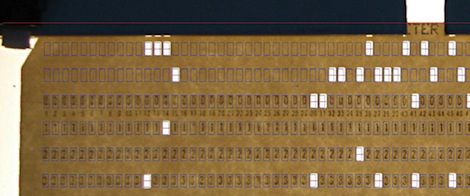
Femto-photography is a term that derives its name from the metric scale’s prefix for one-quadrillionth. When combined with photography this division of time is small enough to see groups of light photons moving. The effect is jaw-dropping. The image seen above shows a ‘light bullet’ travelling through a water-filled soda bottle. It’s part of [Ramesh Raskar’s] TED talk on imaging at 1 trillion frames per second.
The video is something of a lie. We’re not seeing one singular event, but rather a myriad of photographs of discrete events that have been stitched together into a video. But that doesn’t diminish the spectacular ability of the camera to achieve such a minuscule exposure time. In fact, that ability combined with fancy code can do another really amazing thing. It can take a photograph around a corner. A laser pulses light bullets just like the image above, but the beam is bounced off of a surface and the camera captures what light ‘echos’ back. A computer can assemble this and build a representation of what is beyond the camera’s line of sight.
You’ll find the entire talk embedded after the break.
Continue reading “Femto-photography: Taking Pictures Of Bullets Made Of Light”















